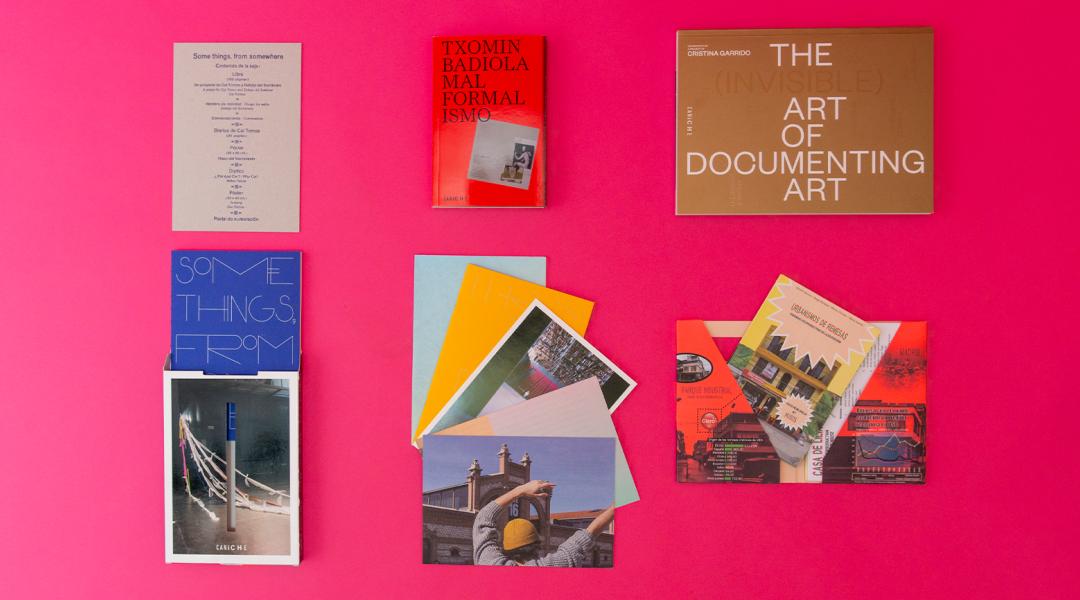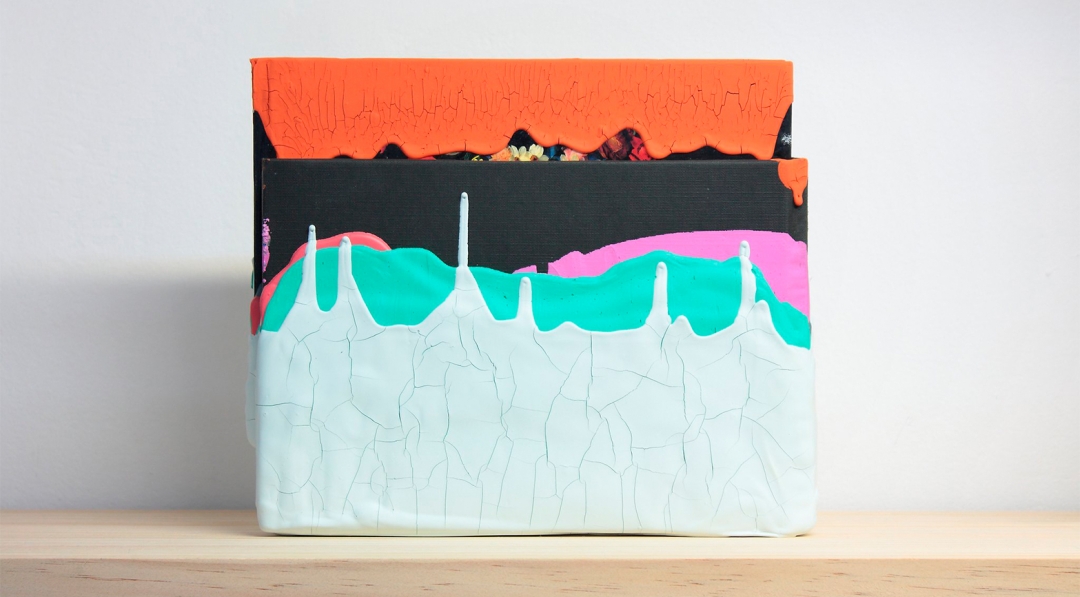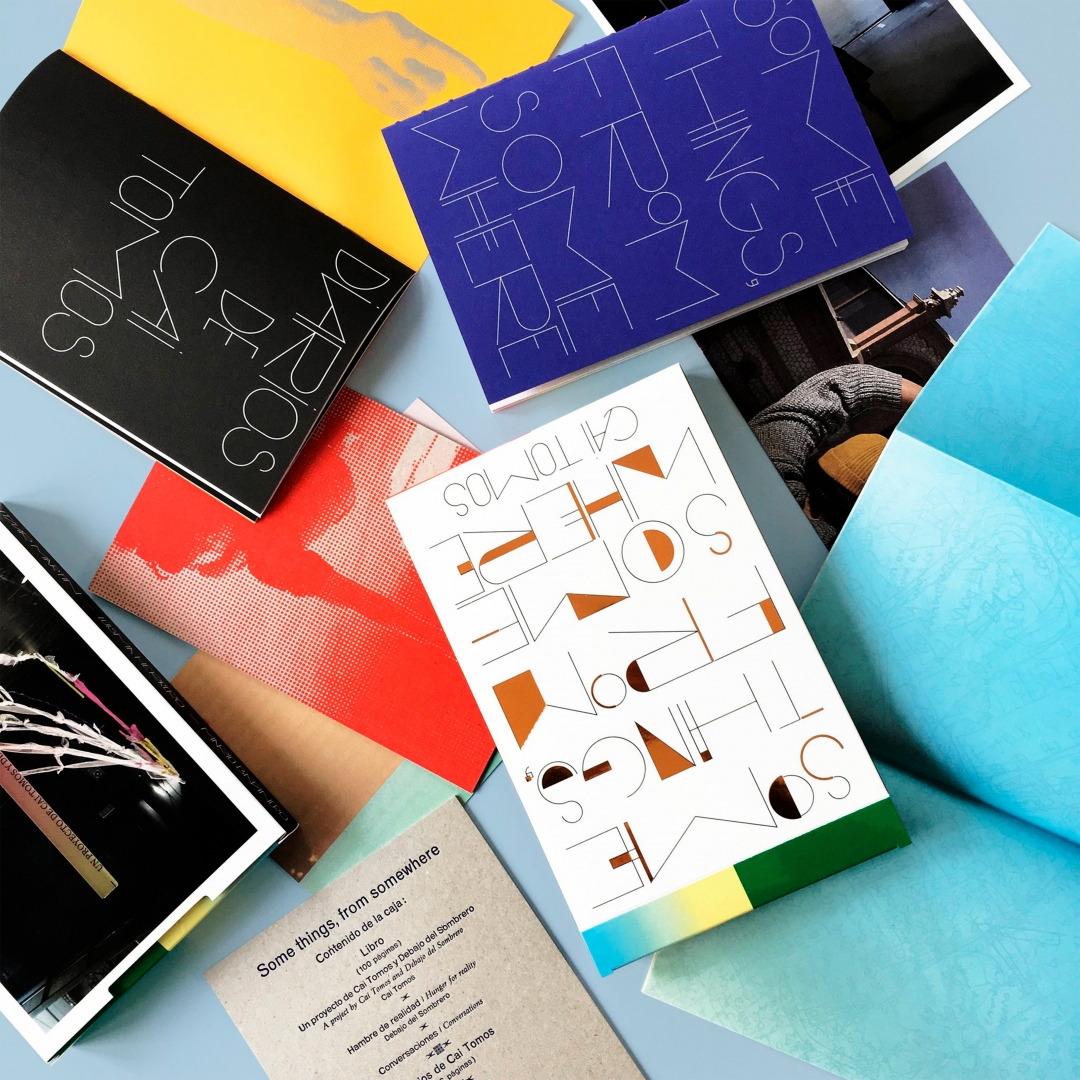Caniche Publishing House
Assault on Art

A book bound with a stippled cover. A photo diary by a band on tour in Mexico. A poetry book devised as a Duchampian readymade. A selection of books turned into a pictorial artwork by a plastic artist. The Caniche publishing house sees publishing as a space of freedom and adventure, in which each project follows its own rules.
Caniche emerged as the result of an assault, as the publisher’s owners call the artistic actions they’ve been organising over the past five years. Joined by their interest in architecture, design, and art, Carlos Copertone (Cáceres, 1973), a jurist specialised in city planning, and architect Patxi Eguiluz (Orduña, Bizkaia, 1972) decided to bring the three disciplines, and several others, together under one creative roof. “The Caniche project,” says Copertone, “came to life in order to bring some kind of organisation to things we were already doing, whether on our own, together, or with others. We started it in 2015, in a time when we could still feel the consequences of the financial crisis and there were very few platforms left where the work of artists and architects were shown.”
Their first assault was an intervention defined by the decontextualization of the artistic act—a characteristic that is essential to their work philosophy. In this case, they presented the art of Raúl Domínguez in a coal yard in the Madrid neighbourhood of Lavapiés. “It was about creating ephemeral artistic happenings that would feel like they were out of place; that’s where the idea to call them assaults came from,” Eguiluz adds. Caniche transforms those actions into books, but it also uses books as a starting point to carry out these interventions.

'Exaptation', by artist Carlos Irijalba. © Caniche
Publishing from the resistance
Copertone regards the idea of “exploring the book as an architectural structure that generates a productive space” as the motive that led them to publish their first reference. From that moment on, Caniche became a creative lab through which sculptor Txomin Badiola published a novel, Malformalismo, and art specialist Cristina Garrido portrayed and narrated the process of documentation and photography of works of art in The (Invisible) Art Of Documenting Art. True to their philosophy, Copertone and Eguiluz made their first book a poetry bundle, although it was already imbued and characterised by the spirit of Caniche. Says Eguiluz: “Ready-Made was carefully designed. It wasn’t a traditional book of poems; it was an interaction between design and author Mateo Navarro’s poetry, with both elements being equally relevant in the book.”
An adventurous project as Caniche could be confused with an exercise in elitism, but nothing could be further from the truth. What the publishing house is looking for is to defend the book as an object, now that the format seems to be in danger of extinction, at the mercy of a market with an overabundance of offers and offers that aren’t up to the consumer standards. “We’re completely self-managed. We try to get involved with any project without thinking about potential commercial success, but following our own criteria,” says Copertone. “We’re carrying out an act of resistance,” adds Eguiluz, “and by doing so, we contribute to the persistence of the book. We publish books we believe in, and we design them the best way we can. Design is very important in this publishing house.”
Eguiluz and Copertone are the visible part of a team that further includes Ernesto Miralta and Isabel Lerma. The former brings his experience in business management to an initiative that, up until very recently, was one hundred percent artisanal—from manufacturing to distribution. Lerma, on her part, contributes to the firm with her professional knowledge in the literary and publishing fields.

'Obras completas', the first book by artist Guillermo Mora. © Caniche
Taking art for a walk
Caniche publishes books in limited editions. “We consider each book a project,” says Eguiluz, “which, once concluded, needs no further revisiting.” However, the house’s most recent reference, Malformalismo, inaugurated the Letra Caniche collection, which does admit reissues, if need be. “We feel more at ease working with limited formats. We created Caniche in order to provide an outlet for projects that might never have come to life otherwise. Our limited budget goes hand in hand with the ephemeral nature of everything we do. The priority is to take the art world out of the usual places. Finding alternatives is much easier if the intervention only lasts a day. Plus, it makes it more attractive, because of the urgency implied: if you don’t see it in that instant, you’re never going to see it.”
Guillermo Mora, David Bestué, Carlos Irijalba, and Rafa Munárriz are some of the authors in the publisher’s stable, alongside Nacho Canut and Alaska, members of pop band Fangoria. The two are responsible for what’s likely the most pop-like book in the catalogue, Mx Ultra, commissioned by the firm, and consisting of photos taken by Canut during the duo’s tour of Mexico, with comments by the Alaska. It is a piece in which the authors are invisible, and the only glimpse we get of them is in the gaze they project on objects, places, and people.
Thus, Caniche presents itself as a publishing house that seeks to “accompany, push, stimulate, and finance artists so that they can develop a creation process, in such a way that it’s hard to recognise a Caniche book at first sight, as it’s not made according to a predetermined pattern. What they do have in common is the care taken in designing them.” Among the works slated for release in the near future is El archivo del polvo by Elena del Rivero, narrating her personal experience during 9/11. Also, Letra Caniche will publish books by Itziar Okariz, Jon Mikel Euba, and Moisés Puente.

'Some things, from somewhere', by Cai Tomos + Debajo del Sombrero (Belén Sánchez, Andrés Fernández, Alberto de Torres, Itziar Martín, Luisma Herrero, and Mario Batanero). © Caniche
Copertone sees the journey so far as a learning experience, “because nothing is more fertile and productive than surrounding ourselves with artists and architects, and accompanying them in their creative processes.” A pure matter of different talents meeting and giving each other feedback in a spontaneous yet necessary way. “I feel that talent always depends on that what interests you as a spectator, reader, or user,” says Eguiluz. “In my case, I see that gift as the ability to surprise me in a field that I’m interested in.” Copertone, on the other hand, talent is “a certain je ne sais quoi, as Miguel Fisac said, and we just try to serve as a vehicle or means of communication for a creator, in their struggle to understand the world, to reach the rest of the people.” Art as an echo chamber of our existence, publishing as a process of growth, transformation, and the diffusion thereof. That is Caniche.



